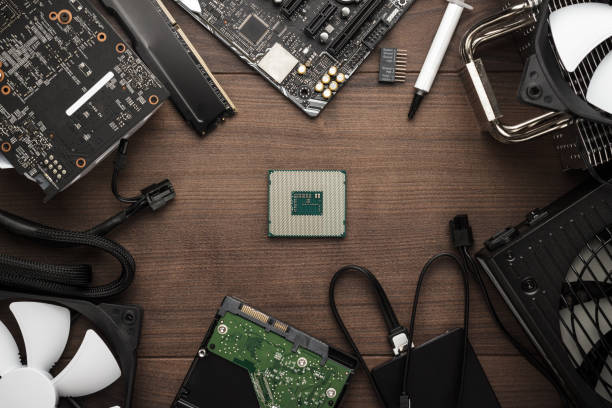Best Fixes for Gaming Consoles not Connecting to Laptop
It can be frustrating when your gaming console fails to connect to your laptop, especially if you're eager to jump into your favorite games. However, you can take several troubleshooting steps to resolve the issue. Here are some of the best fixes for a gaming console not connecting to a laptop. Try these solutions at home or ask game console repair providers for technical assistance.
Fixes for Gaming Console not Connecting to Laptop
Check the Physical Connections
The first step is to ensure that all the physical connections are secure. Ensure the console is properly plugged into a power source and connected to the laptop via the appropriate cables. Ensure that the HDMI or DisplayPort cable is securely plugged into the console and the laptop.
Verify HDMI Input/output Settings
If you're using an HDMI cable, verify that your laptop is set to receive input from the HDMI port. On Windows, right-click on the desktop, select "Display settings," and ensure the correct HDMI input is selected. On Mac, go to "System Preferences," choose "Displays," and select the appropriate HDMI input.
Update Graphics Drivers
Outdated or incompatible graphics drivers can cause connectivity issues between your console and laptop. Visit the website of your laptop manufacturer or the graphics card manufacturer to download and install the latest drivers for your system. Restart your laptop after installing the updates to ensure they take effect. Or take help from fixed game console service providers in this regard.
Disable Conflicting Software
Certain software, such as screen recording or streaming applications, can interfere with the connection between your console and laptop. Temporarily disable or exit any unnecessary software running in the background and try connecting your console again. If the relationship is successful, you may need to adjust settings or find alternative software compatible with your setup.
Restart Devices and Try Different Ports
Sometimes, a simple restart can resolve connectivity issues. Please turn off your console and laptop, unplug them from the power source, and wait a few minutes. Then, reconnect and power them on. Additionally, try connecting your console to different ports on your laptop to rule out a faulty port as the cause of the problem.
Disable Firewall or Antivirus Software
A firewall or antivirus software can block the connection between your console and laptop. Temporarily disable these security measures to see if they are causing the issue. If the connection works with the firewall or antivirus disabled, adjust the settings to allow the console to communicate with your laptop.
Use a Different HDMI Cable or Adapter
If you have access to another HDMI cable or adapter, try using it to connect your console to your laptop. Faulty cables or adapters can prevent a successful connection. Ensure the alternate cable or adapter is compatible with your console and laptop.
Check for System Updates
Ensure your laptop and gaming console have the latest system updates installed. Outdated system software can cause compatibility issues and prevent the connection between devices. Check for system updates on your laptop in the settings menu or through the manufacturer's website. For the gaming console repairs, navigate to the system settings or software update section and install any available updates.
Adjust Display Settings on the Laptop
Sometimes, the display settings on your laptop can prevent the console from connecting properly. Access the display settings on your laptop and ensure that the resolution and refresh rate are compatible with the console. Adjust the resolution to a lower setting and see if the connection improves. Disable any display scaling or custom settings that might interfere with the connection.
Enable HDMI-CEC (Consumer Electronics Control)
HDMI-CEC is a feature that allows devices connected via HDMI to control each other. Enable HDMI-CEC on your laptop and gaming console to ensure they can communicate properly. Check the display settings or device manager for HDMI-CEC options on your laptop. For the console, look for HDMI-CEC or similar settings in the system or display settings.
Disable Power-saving Settings
Power-saving settings on your laptop might interrupt the connection between the console and the laptop. Adjust the power settings to prevent your laptop from entering sleep mode or turning off the HDMI port after a period of inactivity. Disable any sleep or power-saving modes that may affect the HDMI connection in the power settings or advanced power options.
Seek Professional Assistance
If none of the above solutions work, it may be time to seek professional assistance. Contact technical support or consult a computer technician who can diagnose and resolve the connectivity issue. They will have the expertise to identify any underlying hardware or software problems and provide appropriate game console repair services.
Contact Customer Support
If none of the above solutions work, it may be necessary to reach out to the customer support teams of both your console and laptop manufacturers. They can provide further guidance specific to your devices and help troubleshoot the problem in more detail.
Conclusion
Remember, each console and laptop setup can have unique challenges, so it may take trial and error to find the solution that works for you. Following these steps increases your chances of successfully connecting your gaming console to your laptop and returning to your gaming adventures. If not, hiring professional game console repair services from a trusted provider like Your Phone Guy LLC is better.


